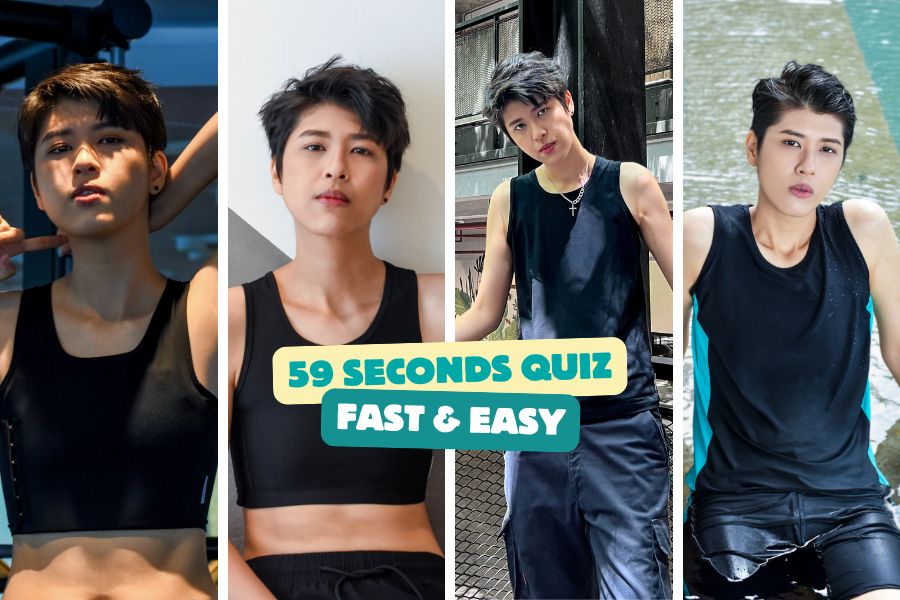When you hear the word binder, what comes to mind? For many, it’s a simple garment, a piece of fabric designed to compress the chest. But for the millions of people who use them, binders are so much more than that. They’re tools of empowerment, expressions of identity, and sources of comfort.
Whether used by transgender men, nonbinary individuals, gender-nonconforming people, or anyone else who wants to alter the appearance of their chest, binders play a vital role in helping people feel more at home in their bodies.
But binder use doesn’t look the same for everyone—it exists on a spectrum. From different styles and needs to varying reasons for wearing one, the world of binders is as diverse as the people who wear them. This post dives into that diversity, exploring the various ways binders are used, the reasons behind their significance, and how to wear them safely and confidently.

Why Do People Use Binders?
Binders serve many purposes, and they aren’t exclusive to one gender or identity. Here are some of the key reasons why people use them:
1. Gender Affirmation
For transgender men and nonbinary individuals, binders are often a critical tool in gender affirmation. By flattening the chest, binders help reduce gender dysphoria, aligning physical appearance with gender identity. The sense of relief and confidence that comes from seeing a body that feels “right” can be life-changing.
2. Exploring Gender Expression
Not everyone who wears a binder identifies as transgender. Gender-nonconforming people and those exploring their gender may use binders to experiment with how they want to present themselves. It’s a way to play with androgyny, mix masculine and feminine styles, and discover what feels authentic.
3. Personal Comfort
Some people feel more comfortable with a flatter chest, regardless of their gender identity. For individuals with larger chests, binders can help reduce unwanted attention or provide a sense of security in certain social situations.
4. Fashion and Style
For some, binders are all about aesthetics. They allow people to experiment with clothing styles that look and feel better with a flatter chest, such as button-ups, slim-fit shirts, or unisex clothing.
5. Temporary Needs
Not everyone uses binders daily. Some people wear them occasionally, whether for a specific event, outfit, or photoshoot. This flexibility allows individuals to tailor their binder use to their unique needs and circumstances.

The Spectrum of Binder Use
Binder use isn’t a one-size-fits-all experience. It varies widely based on identity, personal preferences, and physical needs. Let’s break down some of the different ways people approach binder use:
1. Full-Time vs. Occasional Wear
- Full-Time Users: Some people wear binders daily as an essential part of their routine. For many trans men and nonbinary people, binders are integral to feeling comfortable in their skin.
- Occasional Users: Others may wear binders only when they’re in certain spaces, such as formal events, work environments, or when trying out a new style.
2. Fashion vs. Dysphoria Management
- Fashion-Forward Users: For some, binder use is primarily about achieving a desired aesthetic or look. These individuals might pair binders with tailored clothing or use them to achieve a sleek silhouette.
- Dysphoria-Driven Users: For others, binders are about survival. They’re a way to combat gender dysphoria, a deeply personal and often emotional process that makes binder use essential to mental well-being.
3. Physical Needs and Limitations
Not everyone’s body can handle the same level of binding. People with respiratory conditions, chronic pain, or other health issues may need to adjust how and when they wear binders. Lightweight or less-compressive options exist for those who want the benefits of binding without discomfort.
4. Age and Binder Use
- Teens and Young Adults: Many people discover binders during adolescence, when gender identity and physical changes can feel overwhelming. For teens, binders often serve as an empowering first step in aligning appearance with identity.
- Older Adults: Binder use isn’t exclusive to younger generations. Trans and nonbinary people of all ages, including older adults, use binders to feel comfortable and authentic in their bodies.

Choosing the Right Binder
Finding the right binder is key to feeling comfortable and safe. Here are some factors to consider:
1. Style
- Full-Length Binders: These cover the chest and torso, offering more coverage and compression.
- Half-Length Binders: These focus on chest compression and stop at the midsection, making them cooler and more breathable.
- Binder Tank Tops: These combine the compression of a binder with the look of a tank top, ideal for layering or casual wear.
2. Material
- Look for breathable, high-quality fabrics like spandex, nylon, or cotton blends. Moisture-wicking options are ideal for hot climates or active lifestyles.
3. Sizing
- Always refer to the brand’s sizing chart and measure yourself carefully. A properly fitted binder should feel snug but not restrictive. Never size down for extra compression—it’s unsafe and can lead to serious health risks.

Safety First: Tips for Healthy Binding
As empowering as binders can be, it’s important to use them safely. Improper binding can cause physical harm, so here are some key guidelines:
-
Limit Wear Time:
Avoid wearing a binder for more than 8 hours a day. Your body needs time to relax and recover. -
Take Breaks:
If you’re wearing a binder daily, try to incorporate binder-free days or hours to give your chest a break. -
Never Sleep or Exercise in a Binder:
Your body expands during sleep and physical activity. Binding during these times can strain your lungs, ribs, and muscles. -
Avoid Improvised Binders:
Using ace bandages, duct tape, or other DIY methods is extremely unsafe. Always use a professionally designed binder. -
Listen to Your Body:
If you experience pain, shortness of breath, or discomfort, remove the binder immediately. Persistent pain should be addressed with a healthcare professional.

Breaking Down Stigma Around Binding
Binder use is often misunderstood, particularly by those outside the LGBTQ+ community. People who bind are sometimes met with judgment, ignorance, or invasive questions, which can create feelings of shame or isolation.
Here’s what you need to know:
- Binding Is Valid: Whether someone binds daily, occasionally, or just once in their life, their choice is valid and deserves respect.
- It’s Not About You: Asking invasive questions about why someone binds or pressuring them to stop is not supportive. Respect their autonomy and let them share on their terms.
- Education Is Key: If you don’t understand binder use, take the time to learn. Read, listen, and engage with resources that amplify the voices of those who bind.
The Future of Binder Use
As awareness around gender diversity grows, so does the availability of inclusive products like binders. Brands are innovating to create binders that are safer, more comfortable, and more inclusive of different body types. The growing visibility of trans and nonbinary communities is also helping to reduce stigma, making binding a more widely understood and accepted practice.
Ultimately, binders represent something far greater than their function. They’re symbols of empowerment, tools for self-expression, and lifelines for those navigating the complex journey of gender and identity.
Binder use exists across a spectrum, reflecting the diverse identities, needs, and experiences of the people who wear them. For some, binders are daily essentials. For others, they’re occasional tools for self-expression. Regardless of how they’re used, binders play a profound role in helping people feel seen, affirmed, and comfortable in their own skin.
So, whether you’re binding for gender affirmation, fashion, or comfort, know this: you are valid. Your choices are your own, and your journey is yours to define.
And for those who don’t bind but want to be allies—listen, learn, and support. Together, we can create a world where everyone feels free to be their authentic selves, one layer at a time.




















Leave a comment